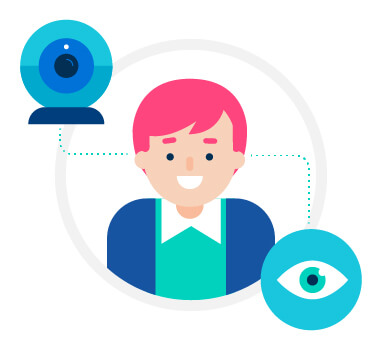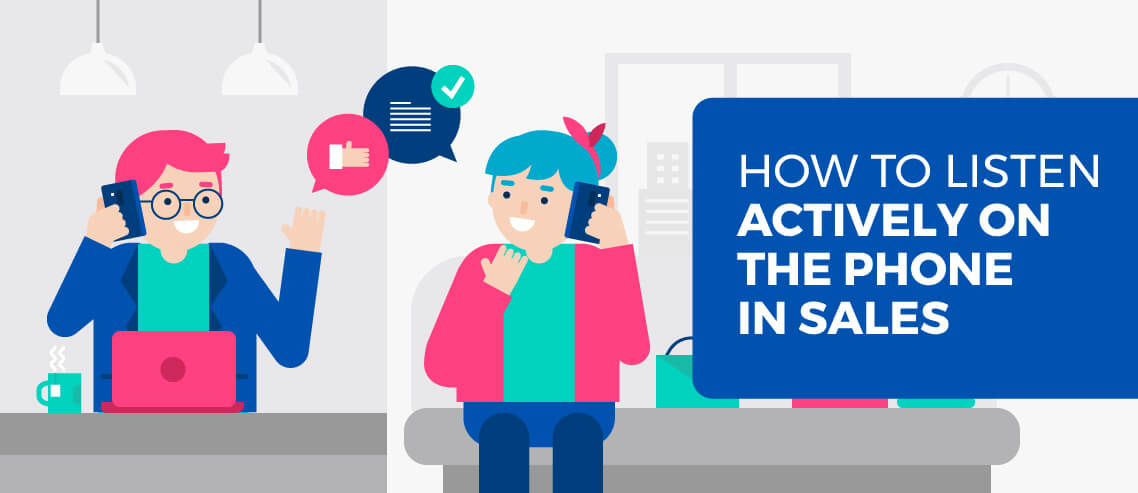Building Rapport on Remote Sales Presentations: 6 Steps for Creating Connection

Contents
If you haven’t had to conduct a remote sales presentation yet, chances are you will soon. Advances in technology and the globalization of work mean that, for many companies, prospects are just as likely to be on other continents as they are in your backyard.
But while it may seem difficult to establish rapport while selling online, there are plenty of strategies, tools, and technologies you can use to replicate the face-to-face sales experience. The following six steps can help you create a connection with your prospect, no matter where in the world you are in relation to them:
Step #1: Create Touchpoints Before Your Presentation with an Automated Email Sequence
Building an automated email sequence to be deployed ahead of your sales call serves two key purposes. First, sending multiple messages in advance makes it less likely that your prospects will forget about your call and accidentally blow you off. But they’re also a great opportunity to build name recognition and familiarity before you’re able to connect.
Some messages you might want to incorporate into your sequence include:
- Two days before your online presentation share content pieces your team has created that support the information you’ll deliver on your call
- Approximately 24 hours in advance of your call send a general meeting reminder
- A few hours before your call request whether or not the prospect has any last-minute questions they’d like to be sure you address during your time together
- Five minutes prior to your presentation send a reminder letting prospects know that you’re about to jump on the call – and that you’re looking forward to connecting
The specific cadence you decide to send should come down to a number of factors, such as the length of time between when you book the meeting and when it actually occurs, as well as how sensitive you believe your prospects may be to receiving multiple messages.
If you have a prospect with a terse communication style, for example, that could be a signal to send fewer messages. Similarly, if you’ve booked a sales call with less than 24 hours notice, you’ll want to be sure you can tailor your sequence so that your prospect doesn’t receive an onslaught of messages at once.
Regardless of how you choose to structure your sequence, tools like Mailshake make it possible to create rapport by customizing your messages without adding extra work to your plate.
Step #2: Incorporate Storytelling Into Your Presentation
Good salespeople know that storytelling makes presentations more memorable. But that’s not the only reason to incorporate this practice into your business pitch deck. It can also be a great way to increase rapport by putting the focus on your sales prospects.
Let’s face it. Most people are selfish. We want to feel like we’re the center of things. Stories that allow us to put ourselves in the hero’s shoes resonate and make us want to engage and know more.
As a salesperson, you can leverage this effect by preparing potential stories ahead of time. Familiarize yourself with your company’s customer case studies, and make sure you know – inside and out – how they relate to the pain points of your different buyer personas. That way, when you get on a sales call, you can segue naturally into the story that’s most relevant to your prospect’s needs and experiences.
All of that said, delivery goes a long ways. If your story feels forced, you’ll lose the momentum you’ve built. Instead, improve connection by practicing the delivery of your stories until you can incorporate them naturally and seemingly “on-the-fly”.
Step #3: Make Use of Visuals
According to research by Britton Manasco and M. Lee Sellers, compelling visuals can accelerate the buying process. “Instead of spending your precious meeting time trying to paint demanding word portraits and trying to synchronize your thoughts with those of your prospects, you can simply lay out a visual image that depicts the complex problem or solution you are trying to describe.”
So, how can you leverage visuals most effectively when you might be on the other side of the world from your prospect?
When you’re giving a remote sales pitch, you ideally want to deliver your well-designed content via a video meeting with screen sharing. With video conferencing you control the pace of the visual presentation while making a real face-to-face connection with your prospects. This can be more effective than sending your materials in advance and reviewing them on a call, as it allows you to manage the flow of information and offer on-going clarification as needed.
Imagine, for example, that you sell a complex technical solution. If you send your proposal ahead of time, prospects may feel overwhelmed by the breadth of information and overlook key details. Instead, by sharing your content during your remote sales presentation, you can speak directly to your audience and draw their attention to key points as you describe them, resulting in greater clarity and more effective information delivery.
If your video conferencing solution does not have these capabilities, consider upgrading before your next sales call to see the difference.
Step #4: Make Eye Contact with Your Camera
This is a quick and easy one: make sure you’re making eye contact with your camera when giving a remote sales presentation.
Think about when you speak to someone face to face. If that person won’t meet your eyes, you may perceive them to be dishonest and untrustworthy. The same goes for sales presentations where a lack of eye contact only amplifies many people’s natural reticence to trust salespeople.
Many people giving remote sales presentations tend to look down at the slides they’re sharing – not at their camera. As a result, participants may spend the entire presentation without experiencing the regular eye contact needed to build rapport.
To create a greater connection on your remote sales calls, practice keeping your eyes trained on your camera. Know your presentation material inside and out so that you can complete the session while referring to it sparingly.
Step #5: Don’t Skip the Small Talk (But Do Improve It)
Small talk may feel cliche, but there’s a reason it’s become a regular social ritual. Small talk builds rapport by allowing presentation participants to engage in a relatively low-stakes way. Without that initial connection, prospects may not feel as comfortable transitioning into the higher-stakes content of your sales presentation.
So don’t skip the small talk, but do try to come up with something better than, “How’s the weather where you are?” Instead, research your prospects, follow their social accounts and keep up to date about what’s happening in their industry. This will give you a starting point for conversation that can naturally transition into your sales presentation.
For instance, if a little Google magic reveals that one of your prospects has recently spoken at a conference, you could ask how their session went. If they contributed an article to an industry publication, ask a question that demonstrates you read and engaged with the piece. If all else fails, find a news headline that you can use to spark conversation – steering away from their competitors’ achievements or potentially negative news, of course!
Step #6: Incorporate Body Language and Vocal Cues to Reinforce Connection
Finally, when you aren’t connecting in person, you need to be especially cognizant of the role that body language and vocal cues play in building rapport. If you’re sitting next to someone, your body language will speak loudly and clearly for you. But when you’re remote, you may not be as conscious of the message you’re telegraphing to your prospects.
If you’re conducting your sales presentation using live video, do your best to maintain an alert posture. Don’t slump in your seat. Instead, lean into the camera slightly to convey your interest in the prospect and enthusiasm for your product or service.
Similarly, make sure you speak clearly, and regularly inject some vocal variety into your tone to keep your presentation engaging. If you aren’t sure whether or not you’re pulling this off, use the record feature on your video conferencing tool to capture a mock sales presentation. Or if you have them, review meeting session recordings from previous remote sales calls.
Watching the playback probably won’t be easy, but it’s an incredibly valuable way to identify negative signals you may be giving off inadvertently.
Why Rapport Matters on Remote Sales Presentations
It isn’t enough to have the perfect product or service out there. Even having the best pricing in your industry isn’t enough to guarantee sales. The bottom line is, people have to like you if they’re going to do business with you.
Selling remotely can be just as effective as selling in-person, as long as you take the necessary steps to build rapport. By connecting in advance, using storytelling and video conferencing, and communicating effectively, you’ll be as prepared as you can be to create connection – even if you’re halfway around the world from the prospects you’re pitching.





